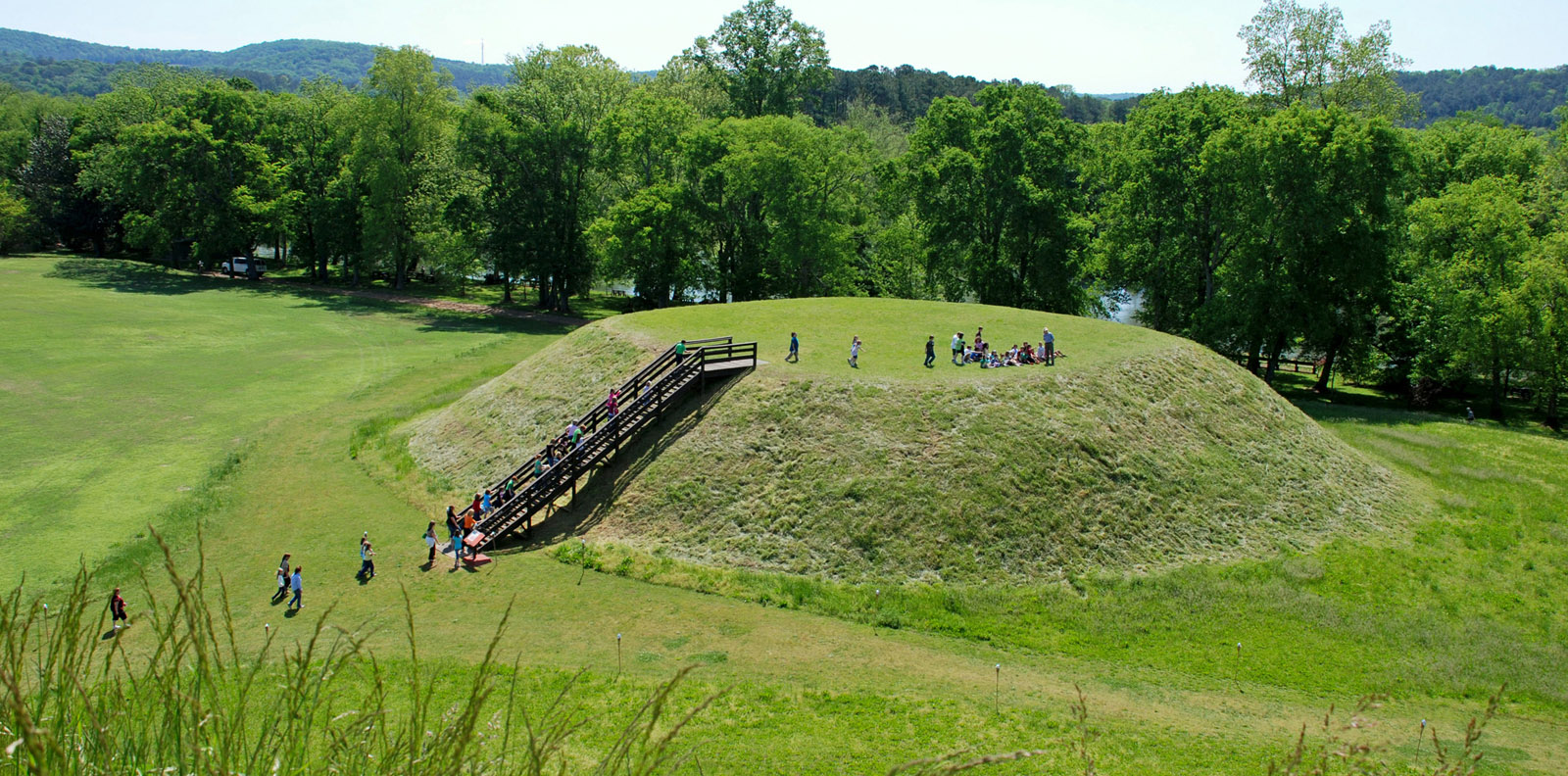Explore Northwest Georgia's Native American History
Travel along the 200-mile Chieftains Trail in northwest Georgia, a region the Cherokee people called "the enchanted land."
Fascinating history and beautiful detours make up Georgia’s lengthy Chieftains Trail. As you visit each stop along the route through the foothills of northwest Georgia, Native American heritage comes to life as you immerse yourself in the early cultures — Mississippian, Creek and Cherokee — that populated the state.
Several cities serve as primary entry points to the trail: Cartersville, Rome and Dalton.
Start in Cartersville, about an hour northwest of Atlanta, at the Etowah Indian Mounds, a political and religious center for the Mississippian tribe. Six earthen mounds, a plaza, a village site and other archeologically significant places make up the 54-acre state historic community, considered the most intact Mississippian village in the Southeast.
From Cartersville, travel to Rome to the Chieftains Museum, in the former home of Major Ridge, a leader of the Cherokee Nation. Ironically, he later signed the Treaty of New Echota, leading to the removal of thousands of Cherokees from their land. Today, the museum, part of the Trail of Tears National Historic Trail, presents interpretive exhibits, educational programs and special events about the Ridge family and Cherokee history and culture.
Stroll through the Major Ridge Demonstration Garden to see native trees, shrubs and raised beds featuring plants used by Native Americans and those that were grown on the Ridge farm. See a replica ferry similar to one Major Ridge would have operated on the Oostanaula River, an archaeological dig site and a small orchard.
Continue to Calhoun, home of the New Echota State Historic Site, and where the Cherokee people assembled for their forced removal and where the Trail of Tears officially started. The former Cherokee capital is now home to a dozen original and reconstructed buildings, including a print shop, courthouse and council house.
Farther north in Chatsworth, take a guided tour of the Chief Vann House Historic Site, known as the “showplace of the Cherokee Nation,” and considered Georgia’s best-preserved Cherokee home. Marvel at the cantilevered “floating” staircase that leads to one and a half additional levels while balancing itself without support. Chatsworth is also home to Fort Mountain State Park, where it’s believed early Native Americans built the property’s 855-foot-long wall as fortification from attacks.
The last stop of the trail takes you to Funk Heritage Center of Reinhardt University in Waleska. Allow plenty of time to take in the interpretive center’s many exhibits, which include a Hall of Ancients with artifacts, dioramas and interactive programs, the Rogers Contemporary Native American Art Gallery and an Appalachian settlement.
Allow two to three days to get the most out of your journey. Convenient and comfortable accommodations along the route include hotels in Rome and the cottages at Fort Mountain State Park in Chatsworth.








